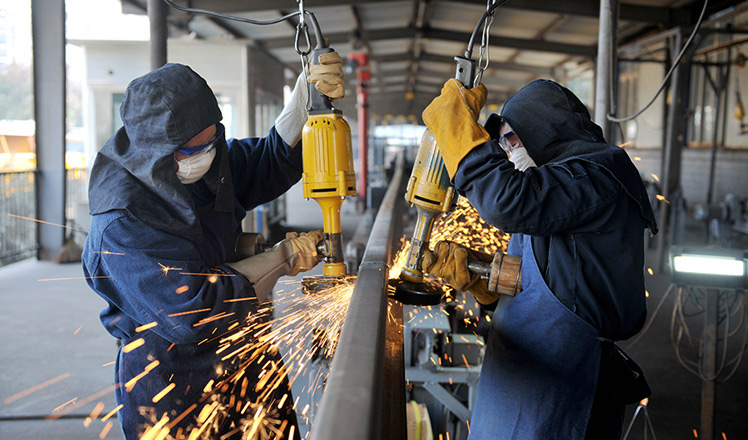Xinjiang cotton at crossroads of new Silk Road
Updated: 2016-02-19 16:52
By Reuters and China Daily in Aksu, Xinjiang(China Daily USA)
|
|||||||||
|
Garments made in Xinjiang are displayed at an industry fair in Urumqi, the regional capital. Zhou Hong / China Daily |
Belt and Road Initiative
The president's Belt and Road Initiative, announced in late 2013, aims to restore China's old maritime and overland trade routes. Xi has said he hopes to increase trade with more than 40 countries to $2.5 trillion within a decade.
Xinjiang is at the heart of the new silk road into Central Asia. China is making huge investments in new railways running from eastern China through Xinjiang to Central Asia and on into Europe.
That should eventually cut transport times to some markets by weeks, giving Xinjiang companies an edge over manufacturers relying on ocean freight.

By subsidizing transport, staff training and insurance, and offering generous support for financing, Beijing's efforts to build a textile hub in Xinjiang could counter the tide of textiles investment pouring out of the country.
But take away the subsidies, and Xinjiang looks a lot less appealing. Freight costs on the first rail lines running west are still 50 percent higher than shipping costs.
Add a minimum wage already about 50 percent higher than that of Vietnam, one of the world's fastest-growing textile hubs, and costs in the region begin to look noncompetitive.
High costs were behind a 36 percent drop in Xinjiang's textile exports in the first eight months of last year, according to Xinjiang's customs bureau.
Beijing's subsidies are simply not enough to put much focus on exports, said Hua Jingdong, board secretary at Bros Eastern, another cotton spinner.
"Our strategy is to make our current domestic production stable, and any additional capacity to be overseas," Hua said
Texhong has recently scaled back its Xinjiang project, from an initial 3 million spindles, to just 1 million. Company officials could not be reached for comment on the change.
- Missing children found safe in nearby village
- Rich Chinese splurge on sportswear as luxury's lustre dims
- Urgent remedy sought for pediatrician shortage
- China starts safety check for school buses as new semester draws near
- Ticket scalpers face crackdown at Beijing hospitals
- Judicial DNA test in hot demand after policy change
- Classic Car Show kicks off in London
- Balkan, Austria police agree to register refugees on Macedonian border
- Turkey blames Kurdish militants for Ankara bomb; vows reprisals
- Britain scrambles fighters to intercept Russian bombers
- Chinese community to protest against Peter Liang's verdict
- Car bomb attack on military in Turkish capital kills 28

 Chinese photographers' work shines in major photo contest
Chinese photographers' work shines in major photo contest
 88th Academy Awards Governors Ball Press Preview
88th Academy Awards Governors Ball Press Preview
 Egg carving master challenges Guinness World Record
Egg carving master challenges Guinness World Record
 Missing children found safe in nearby village
Missing children found safe in nearby village
 Madonna's world tour lands in Hong Kong
Madonna's world tour lands in Hong Kong
 Producing high-speed rail tracks
Producing high-speed rail tracks 
 Surreal world created by Canadian photographer
Surreal world created by Canadian photographer
 Lanterns light up the night across China
Lanterns light up the night across China
Most Viewed
Editor's Picks

|

|

|

|

|

|
Today's Top News
Investigation for Nicolas's campaign
Will US-ASEAN meeting be good for region?
Accentuate the positive in Sino-US relations
Dangerous games on peninsula will have no winner
National Art Museum showing 400 puppets in new exhibition
Finest Chinese porcelains expected to fetch over $28 million
Monkey portraits by Chinese ink painting masters
Beijing's movie fans in for new experience
US Weekly

|

|









